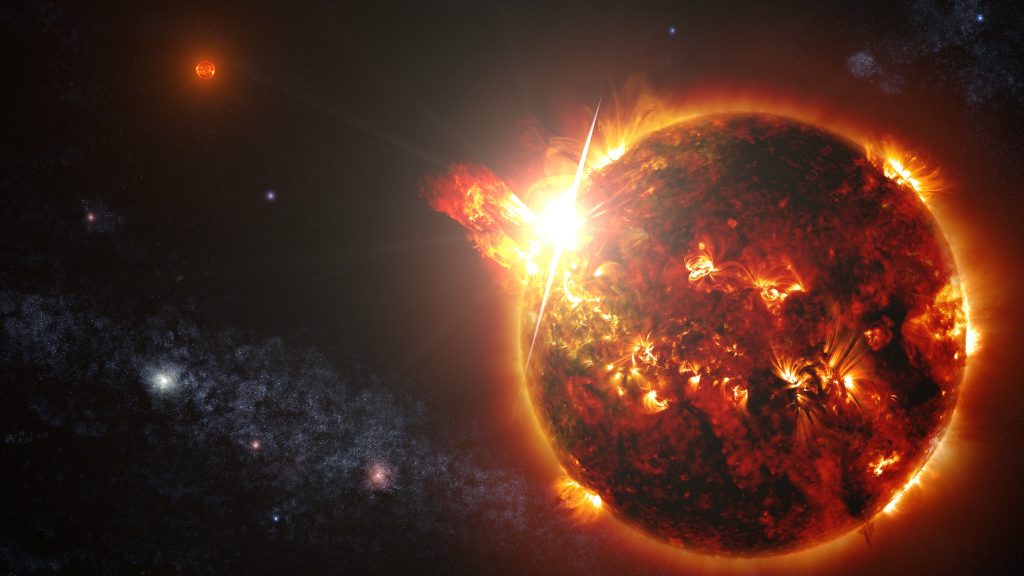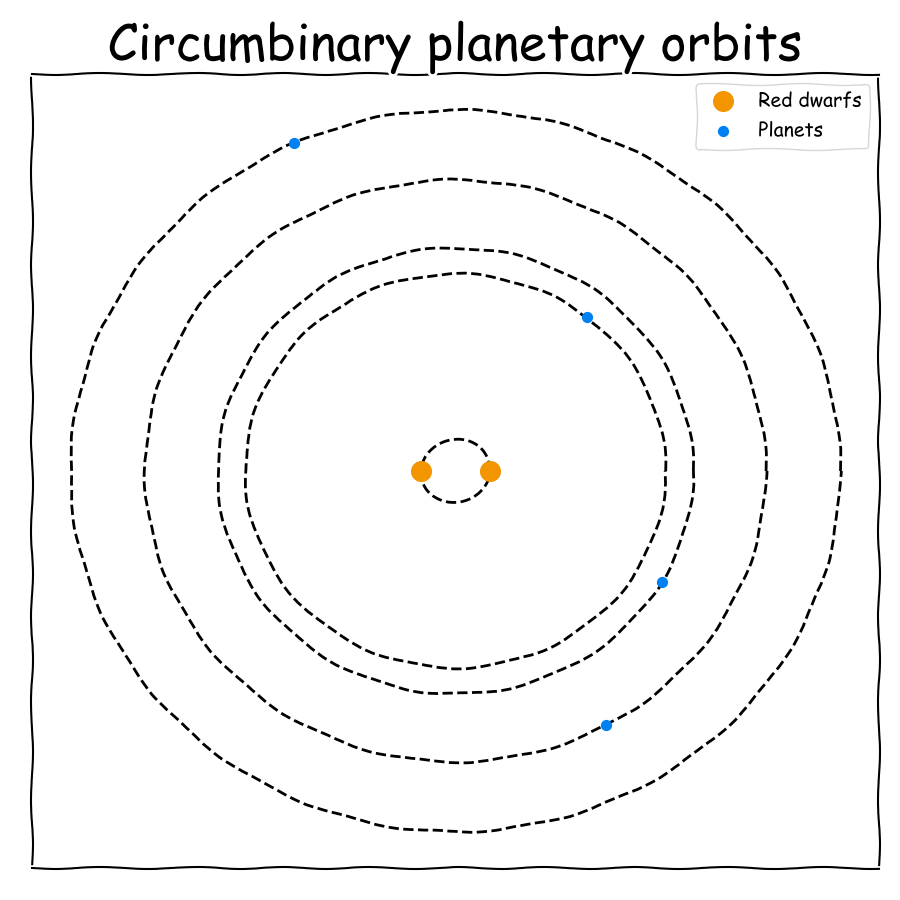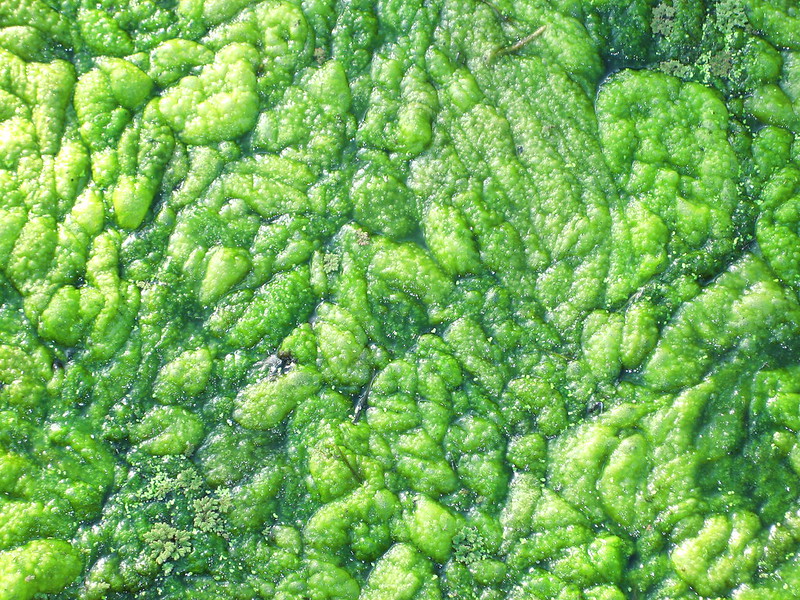Before I go any further I will briefly describe my world building / speculative evolution project. As mentioned previously this is a work in progress but some areas are more fully defined than others. I reserve the right to change my mind as I post more information though!

Since my career in physics is in optics I was interested in considering a world where the interplay of different wavelengths of light had a large influence on evolution. Ideally this would mean considering not just the visible light that we are used to on Earth but also the ultraviolet and infrared on either side.
For this reason I choose a system consisting of two similar red dwarfs. Red dwarfs are cooler than our Sun and so a greater proportion of their light is red or infrared. However, they are also more likely to be flare stars that regularly produce ultraviolet solar flares. Interestingly, as around 70% of all stars are red dwarfs and about half of all stars are in binaries this is not actually an unusual system.
The two stars are quite close and orbit each other every few days. This causes a set of planets to form around them both in circumbinary orbits. These planets range in size but one of the closest is a mini-Neptune. It has a rocky core slightly more massive than Earth and began life with a thick hydrogen atmosphere. As it is much closer to its suns than Earth is to the Sun its orbit period is less than two Earth months.

At this distance the intense flares from both stars in the first billion years of the system’s life evaporates the atmosphere until something only slightly thicker than Earth’s is left. What remains at this point is a habitable evaporated core (sometimes known as a chthonian planet) called Khthonia.
Due to it’s proximity to the twin suns, it does not take long for Khthonia to become tidally locked. This means that one side always faces the suns and the other side always faces away. However, because Khthonia orbits two stars, despite being tidally locked the oceanic tides are much stronger than on Earth. This leads to greater erosion and a higher mineral content in the oceans. Combined with the slightly higher gravity on Khthonia the landscape is dominated by shallow seas and coastal wetlands.
With the passage of years, life on Khthonia eventually began deep in the seas feeding on chemical energy from volcanic hydrothermal vents. The water also provided protection from the harsh ultraviolet flares that would otherwise have sterilised the sun facing side of Khthonia.
However, on the sun facing side at least, the energy provided by the continual illumination was an irresistible draw for single celled life and eventually photosynthesis evolved. Unfortunately, red and infrared light does not penetrate water as efficiently as blue light. This meant that organisms taking full advantage of the illumination also exposed themselves to the risk of being killed by the regular flares.

This conflict resulted in various evolutionary pressures for photosynthetic organisms. Primarily, a greater resistance to ultraviolet exposure was produced, perhaps similar to Earth’s Conan the Bacterium (Deinococcus radiodurans). This allowed access to shallower water over longer periods and increased the amount of light that could be gathered. Another adaptation enabled the detection of rising ultraviolet levels and avoid the oncoming flare by seeking shelter in deeper water. As the ability to continually gather light increased, the constraint on growth became the availability of nutrients not energy. This caused many algal species to become mixotrophs and feed on plankton to resolve the bottleneck.
The increasing complexity of algal lifeforms on Khthonia eventually produced the distant ancestor of all complex life (i.e. equivalent to eukaryotes). Multicellular life evolved from this and diverged into two dominant clades. The first mostly remained free swimming in open water and evolved sophisticated sensing and movement capabilities. The second mostly lived on (or under) the sea bed and adapted to changing environmental conditions with the varying tides, including the ability to survive above water for periods of time.
At some point, a member of the second clade formed a parasitic/symbiotic relationship with the first clade in a similar manner to lichen. This third clade retained some of the capabilities of the other two and rapidly dominated many ecological niches.
Beyond here I do have some ideas, but it is far less concrete and there is no need to go into further detail yet. Over my next articles I will aim to provide some background on the decisions that lead the project in the direction described above. Hopefully my brief description sounds somewhat interesting though. Let me know what you think in the comments.

highly intriging, most definately.
if i may offer, perhaps a minority of the early (later?) plant lineages tried their figurative hands at migrating up and down the water columns – some would nab high-energy sunlight and make it in time to be safely deep-sea by the time theres a flare…and some wouldn't make it.
-anthony
You've read my mind. Single celled algae first evolve gas vesicles to increase buoyancy to stay near the surface. A red photoreceptor evolves to dynamically adjust buoyancy to an appropriate level. A mutated photoreceptor that is receptive to ultraviolet acts to reduce buoyancy so that the algae sinks as the flare begins. It's a simple control system but it should produce the desired result.
Over time, colonies of these algae form and eventually produce spheres like Volvox chlorophytes. Differentiation in cell types occurs and they become a multicellular organism. Photosynthesis on top and nutrient absorption or prey capture in dangling fronds underneath. They initially drift around like jellyfish but gradually become more resistant to ultraviolet exposure. Increased oxygen in the atmosphere also reduces surface UV levels.
Eventually some clades maintain permanent positive buoyancy and remain on the surface. Some may get marooned in shallow water and on beaches so develop into land plants.
Loved reading the update; very enjoyable.
A thought: the winds of this world may well pick up a decent percentage of the land lichens as they venture above the surface of the water….on one hand, the Founder Effect will doom many landings to slow starvation; on the other hand, the Founder Effect may also result in some successful landings spreading in the pool, lagoon, or sea they land in, becoming a monoculture that makes Earth's soda lakes look as diverse as coral reefs. 🙂
On the gripping hand, with red dwarfs, you have even more Deep Time to play around with, so even if it takes longer to reach any given milestone, you have time.
Keep up the great work!
-Anthony Docimo
Thanks again. It's proving difficult to get posts produced as quickly as I would like but I guess I am slowly getting there.
I know its been a while since you posted this but I wanted to ask your thoughts on how life would adapt to solar flares? You mention how water for the most part negates the effects of the flares but I'm also curious if plant or animal life could make it to land. I'm working on my own project and I want to make it as accurate as possible but I'm unsure what sort of adaptations life could have, burrowing and hiding under things to avoid the sun are obvious as well as eyes to detect the flares ahead of time but, I'm curious if thick skin or even a shell could protect against the flares. Could pigments play role in protecting a creature? Would a thick atmosphere exacerbate or lessen the effects? These are just a few of my questions related to solar flares but if you answer can any of them I would greatly appreciate it.
Writing an article on that has been on my todo list for a while but life/work/family/covid/etc keep distracting me.
Well, my first "trick" for dealing with it is the proposed "Binary Habitability Mechanism" that is predicted for some close binaries. The interaction between the stars slows down their initial spin rate but then maintains it at a constant rate for longer. This has two advantages, firstly, it reduces the intensity of the initial flares when life is developing which reduces the level of protection required. Secondly, it maintains the a more constant flare frequency over time. This is advantageous because it would be a challenge for life to maintain flare resistant adaptations if no flare has occurred for tens of thousands of years.
A thick atmosphere would certainly provide some protection though the stellar wind component of flares would slowly erode the atmosphere anyway. I want the flare to be present at ground level so I don't intend to explore this option though.
Water is certainly the initial protective mechanism so a sense and avoid strategy for floating phototrophs is the first method. I.e. swim up when visible light is low, swim down when UV light is high. Phototrophs anchored to the seabed do not have this luxury but the high oceanic tides ensure that some life would always be underwater when a flare hit so not all life would be exterminated.
However, there is certainly pressure for phototrophs to get to stay on the surface so that they can harness near infrared light from the red stars. A variety of UV protection mechanisms exist which I intend to investigate: better DNA repair mechanisms; eutely to reduce cell replication; a more UV resistant alternative to DNA; biofluorescent pigments to absorb UV then emit longer wavelength light; UV blogging pigments (including sulfur deposits); transparent silica shells; etc.
Of course, avoidance is also a viable strategy so (some) "plants" on Khthonia would perhaps be less static than Earth plants as they would need to sense UV and respond by pulling their leaves into a protective cover like sea anenomes. For fully mobile animal-like life this can be taken further to retreat into a shell, a burrow, underwater or other protection.
Great article! I'm working on worldbuilding a planet around a flare star myself and I'm wondering if you can help on this question…
So obviously the flare has the potential to irradiate life on the surface, but to what extent (if any) is it predicted that a flare would heat the planet's atmosphere close to the surface? Would there be a huge temperature spike in the air or would the only "heat" be registered on a geiger counter?
A flare contains two main components. Firstly, there is high energy photons (i.e. light) that cover ultraviolet to x-rays but these can be blocked by the atmosphere (i.e. ozone). The second component is a coronal mass ejection (i.e. stellar wind) that consists of high energy ions. Since they are charged particles they can be deflected by the planet's magnetic field but any that reach the atmosphere will collide with gas molecules and ionise them producing an aurora.
In both cases there would be an increase in energy for some molecules in the upper atmosphere and this will cause atmospheric loss but I don't think it will increase the average temperature of the lower atmosphere significantly. I've not looked at the numbers but I suspect it would just be similar to a total solar eclipse but in reverse. The temperature would just feel slightly warmer while the flare is ongoing as the sun is slightly brighter. When I finally find time to write the post about flares I will try to do a back-of-the-envelope calculation on this subject though.
Sweet! Thanks!
[…] own speculative evolution project involves a planet called Khthonia orbiting twin red dwarf stars. As with all such projects it is an ongoing work of art and this blog […]